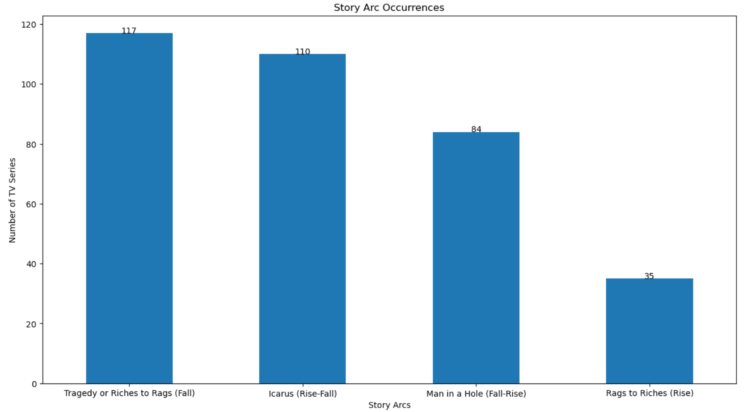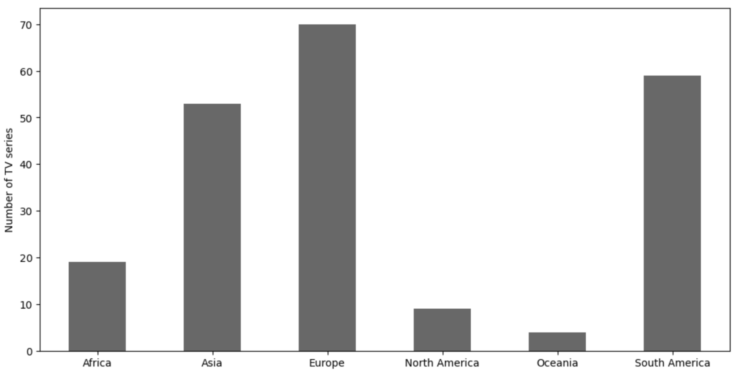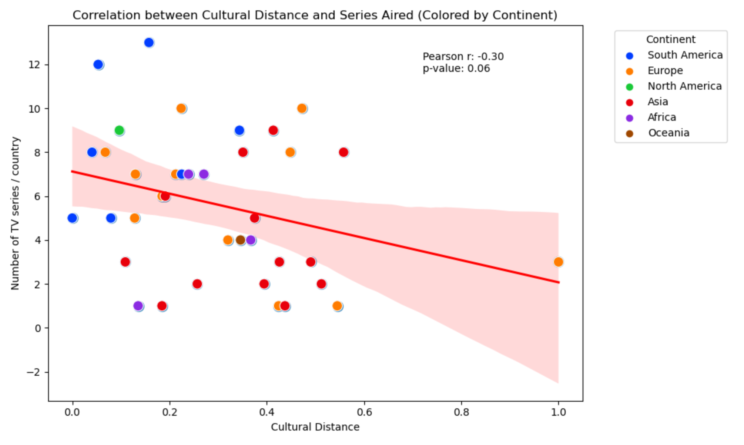My hypothesis is that we can say a lot about a culture by analyzing its popular tales. These tales reflect the dominant views of about life and its twists and turns. Some cultures have a brighter view while others dim. This collective zeitgeist is reflected in popular culture.
We (I, Selcan Mutgan, Guanghui Pan, Abbas K. Rizi) tested it recently using data from Turkey. We analyzed the narrative arcs of 217 Turkish Soap Operas plots (stay tuned for a separate post on my other project using plots of 30,000+ movies). We found that the dominant narrative arc in Turkish Soap Operas is ‘tragic’ where things start all flowery but then everything goes down the toilet as the plot proceeds. May be a reflection of how the Turkish audience expects the life to be?
We followed Kurt Vonnegut’s “shapes of stories” conjecture where he reveals that every story can be plotted on X-Y axes where the Y-axis represents good and bad fortune, the X-axis represents the beginning and end of a story. He suggests 8 dominant ideal types or arcs encapsulating a whole universe of stories. Computational Social Scientists have already tested this thesis with novels and found 6 dominant arcs, but the analysis lacks a broader connection between the culture as well as the production and reception of these arcs (that’s what I do in my solo project). We have found these arcs, so what?
We wrote a algorithm to classify the narrative arcs represented in the Turkish Soap Operas by segmenting their plots in three segments (following the notion that every story has a beginning, a middle, and an end). We track the sentiment polarity and shifts in these segments and find four major arcs in these soap operas (theoretically, there could be many more but the way we set up our algorithm, it yields four following the constraints – enough for our toy example).

The preferred arc, we find, is the tragic arc.

Our explanation, following the aforementioned hypothesis, is that the Turkish audience prefers the tragic arc because (a big, ‘may be’) it resonates with the collective understanding of the ebbs and flows of life?
We also tested where these arcs are consumed and how cultural affinity affects that. Our conjecture was that the cultures that has overlapping elements with the Turkish culture – and hence a similar worldview – would be more receptive to Turkish Soap Operas, and by extension, to the dominant narrative arcs represented in them because they also resonate with their life circumstances (family drama, expectations about romantic love, etc.).

We find that the second biggest market, after Europe, for Turkish Soap Operas is Latin America – and it defies the logic of physical distance. The European market is understandable due to its geographical proximity and shared history (most popular Turkish Soap Operas as on the Ottoman Empire and Harem politics so at least Balkans are the region where these plots capture audience’s attention). Latin America can then be explained only through cultural similarity (may be)?
We use the cultural distance (i.e., how culturally distant a country is from Turkey) metrics from the World Value Survey (on which Inglehart–Welzel Cultural Map is based), and found that the reception of Turkish Soap Operas is indeed associated with the cultural affinity that, in some cases, defies the logic of physical distance.

The toy exercise provides some credibility to the hypothesis stated in the beginning i.e., cultures have peculiar taste preferences when it comes to popular culture. When cultural products (movies, novels, soap operas, dresses etc.) resonate with the local cultures, they are readily consumed – often in places where we do not expect them to be consumed.
More to come as I am developing this theory and testing more hypotheses with different datasets!
Division of labor:
This particular project was executed at Winter Institute in Computational Social Science at NYU-Abu Dhabi. Abdul Basit Adeel provided the general idea, scrapped the plots, and wrote the algorithm for the material presented in this post. Selcan Mutgan suggested the topic (Turkish Soap Operas) and collected data on the markets where these soap operas were aired and also tested geographical diffusion hypothesis. Abbas K. Rizi composed the draft and provided the skeleton to the project by gathering information on Kurt Vonnegut’s hypothesis and others computational projects that have tried to test his hypothesis. Guanghui Pan read through sociological research on diffusion and helped situate the project within broader literature.